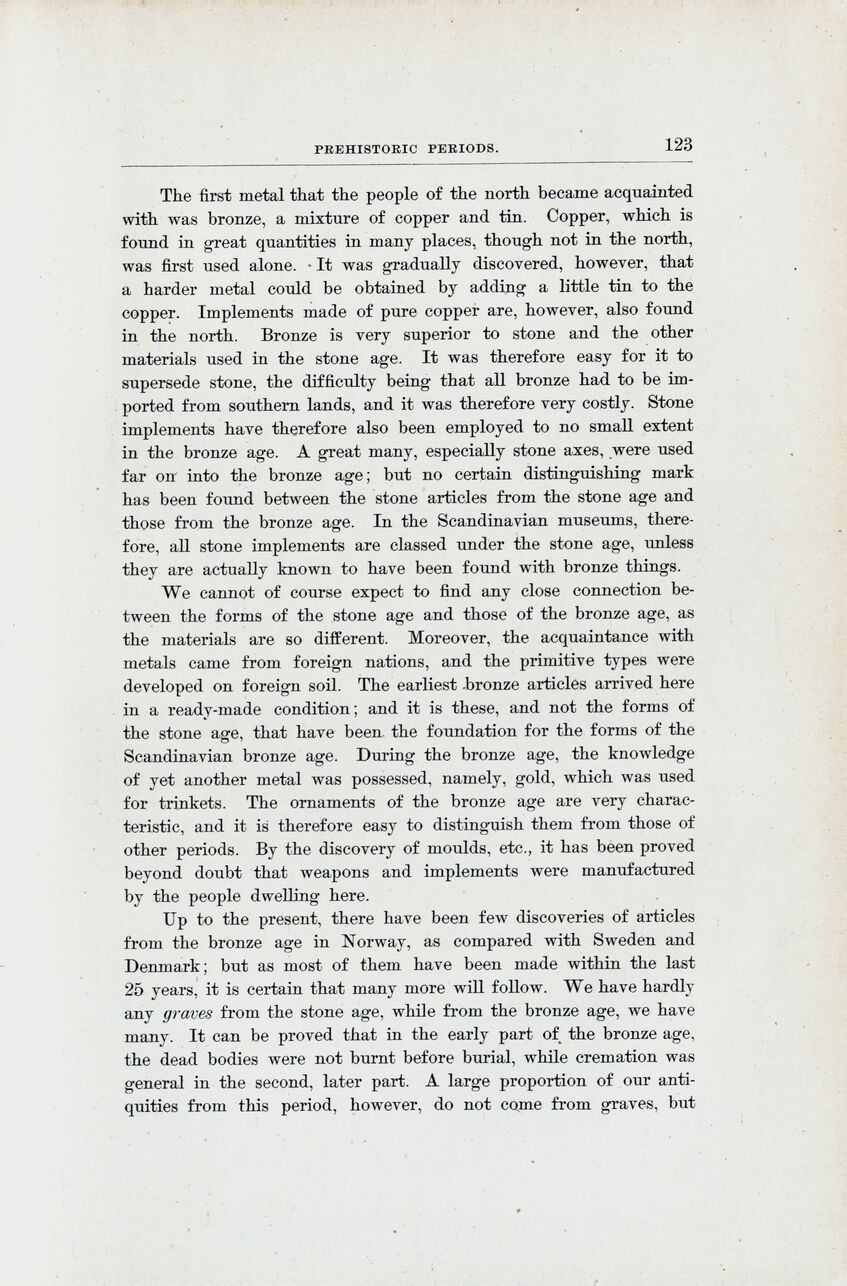
Full resolution (JPEG) - On this page / på denna sida - Prehistoric Periods, by Siegw. Petersen

<< prev. page << föreg. sida << >> nästa sida >> next page >>
Below is the raw OCR text
from the above scanned image.
Do you see an error? Proofread the page now!
Här nedan syns maskintolkade texten från faksimilbilden ovan.
Ser du något fel? Korrekturläs sidan nu!
This page has been proofread at least once.
(diff)
(history)
Denna sida har korrekturlästs minst en gång.
(skillnad)
(historik)
The first metal that the people of the north became acquainted
with was bronze, a mixture of copper and tin. Copper, which is
found in great quantities in many places, though not in the north,
was first used alone. It was gradually discovered, however, that
a harder metal could be obtained by adding a little tin to the
copper. Implements made of pure copper are, however, also found
in the north. Bronze is very superior to stone and the other
materials used in the stone age. It was therefore easy for it to
supersede stone, the difficulty being that all bronze had to be
imported from southern lands, and it was therefore very costly. Stone
implements have therefore also been employed to no small extent
in the bronze age. A great many, especially stone axes, were used
far on into the bronze age; but no certain distinguishing mark
has been found between the stone articles from the stone age and
those from the bronze age. In the Scandinavian museums,
therefore, all stone implements are classed under the stone age, unless
they are actually known to have been found with bronze things.
We cannot of course expect to find any close connection
between the forms of the stone age and those of the bronze age, as
the materials are so different. Moreover, the acquaintance with
metals came from foreign nations, and the primitive types were
developed on foreign soil. The earliest bronze articles arrived here
in a ready-made condition; and it is these, and not the forms of
the stone age. that have been the foundation for the forms of the
Scandinavian bronze age. During the bronze age. the knowledge
of yet another metal was possessed, namely, gold, which was used
for trinkets. The ornaments of the bronze age are very
characteristic, and it is therefore easy to distinguish them from those of
other periods. By the discovery of moulds, etc., it has been proved
beyond doubt that weapons and implements were manufactured
by the people dwelling here.
Up to the present, there have been few discoveries of articles
from the bronze age in Norway, as compared with Sweden and
Denmark; but as most of them have been made within the last
25 years, it is certain that many more will follow. We have hardly
any graves from the stone age, while from the bronze age, we have
many. It can be proved that in the early part of the bronze age,
the dead bodies were not burnt before burial, while cremation was
general in the second, later part. A large proportion of our
antiquities from this period, however, do not come from graves, but
<< prev. page << föreg. sida << >> nästa sida >> next page >>